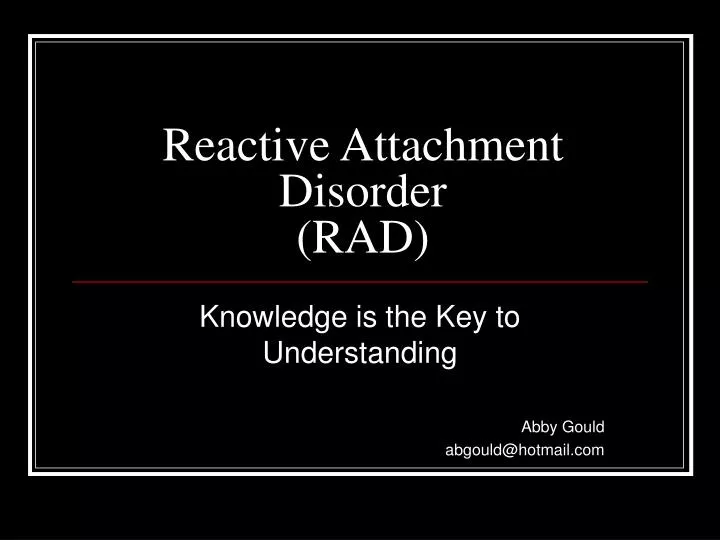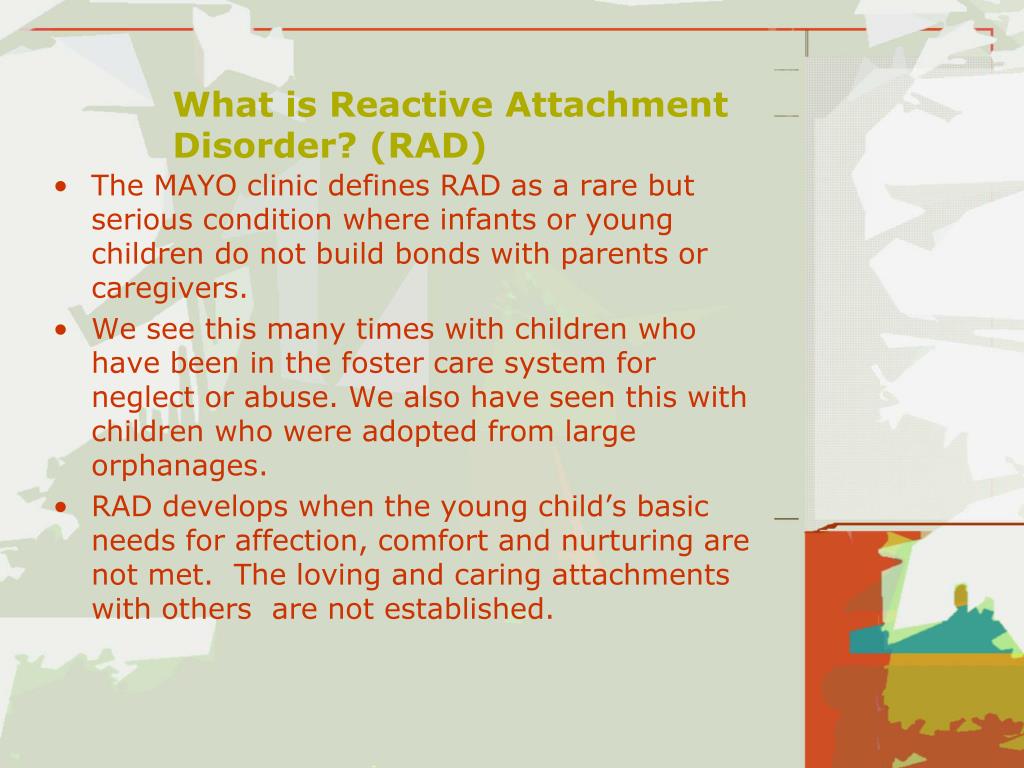
Types of Reactive Attachment Disorder Treatment Approachesįor infants and very young children, reactive attachment disorder treatment approaches have an external focus. Toys and games, especially those that require child-adult interaction help kindle the mind and promote social interaction. Psychological stimulation is another vital for helping the RAD child or teen become less withdrawn. Routines make life predictable, stable, and secure for the child who didn’t have these basic human needs fulfilled as an infant. Yes, these things are ideally provided with love however, attempts to provide love and physical affection without taking the time to establish trust and safety will be met with rejection.Īlso essential to reactive attachment disorder treatment is the establishment of routines. They can’t happen, though, if basic survival needs of nurturance, safety, trust, and stability aren’t met. To be sure, love and caring are absolutely essential. Ironically, love is not the first and foremost element of relationships in RAD treatment. It’s the formation of this first attachment, though, no matter what age it happens, that is the first step in successful treatment of reactive attachment disorder.

People living with reactive attachment disorder don’t have the sense of trust necessary for attachment, so it takes time and patience for a caregiver or helper to form that essential bond. Essential Components of Reactive Attachment Disorder Treatment Reactive attachment disorder treatment that focuses on these goals helps the infant, child, teen, or adult bond with others and engage in meaningful social relationships. Providing opportunities for positive social experiences.Developing a sense of emotional security.Re-building or building new attachment relationships between the child and caregiver.Establishment of a safe, nurturing environment.Addressing medical problems that may have resulted from the neglect.Depending on the person’s age, goals of treatment typically include dealing with issues that produced the reactive attachment disorder symptoms in the first place: Treatment for reactive attachment disorder that is intentional and purposeful is the most effective. Goals of Reactive Attachment Disorder Treatment Because effects of RAD in teens and children can be deep and far-reaching, treatment for reactive attachment disorder is crucial.

This, in turn, leads to reactive attachment disorder, a withdrawal from the world and all social interactions and relationships. Because of extreme neglect, an infant doesn’t form an attachment to a caregiver consequently, he/she doesn’t develop a sense of protection, safety, and trust in the world. RAD is a trauma disorder that results from severe neglect in infancy. Reactive attachment disorder (RAD) treatment is both necessary and possible.


 0 kommentar(er)
0 kommentar(er)
